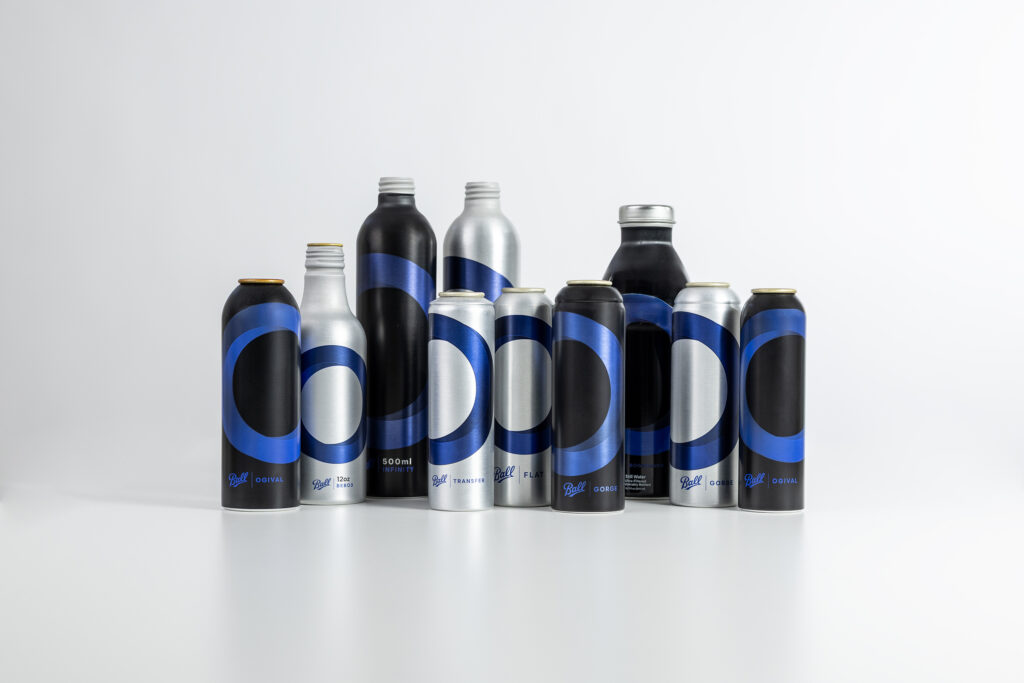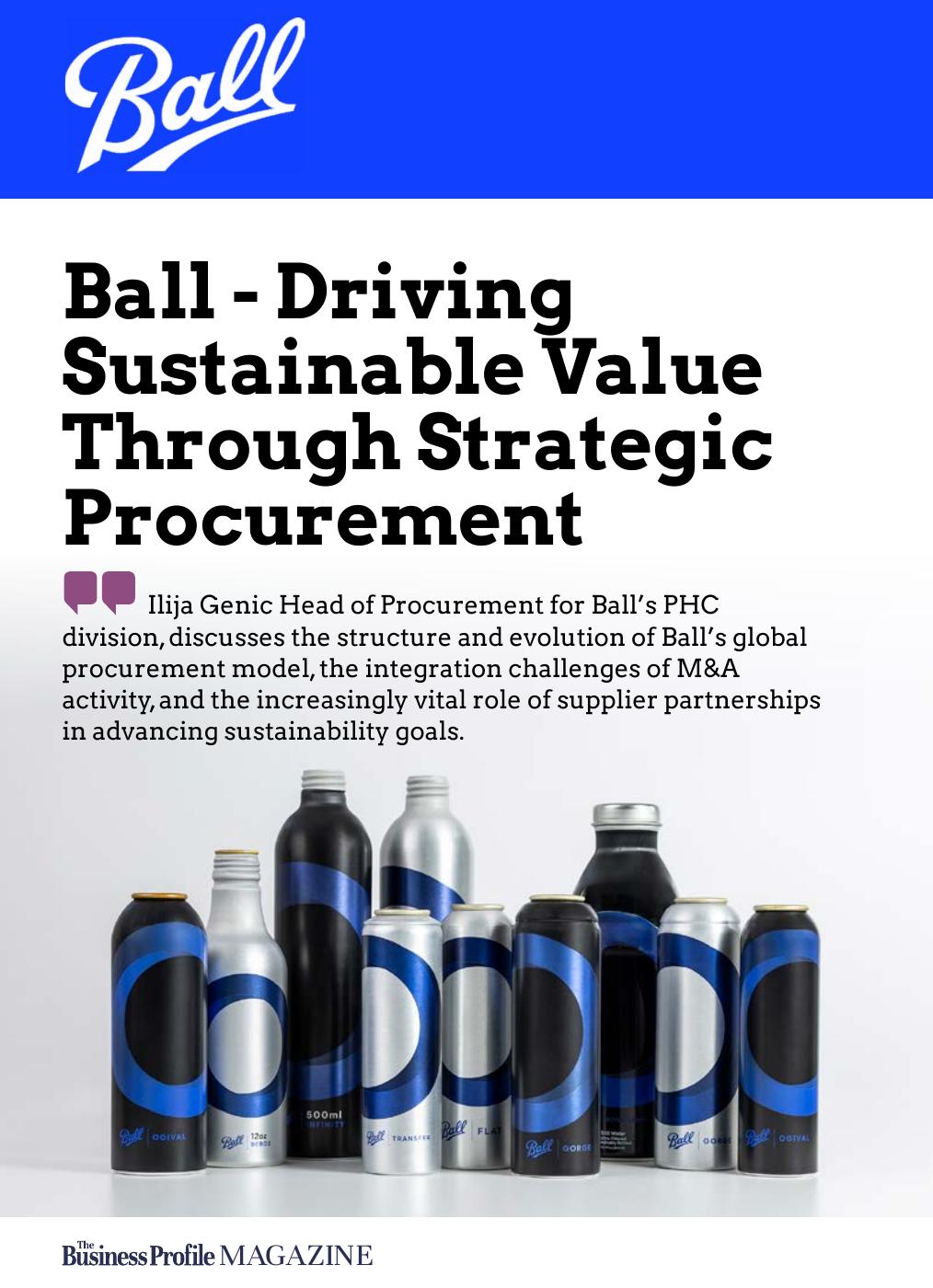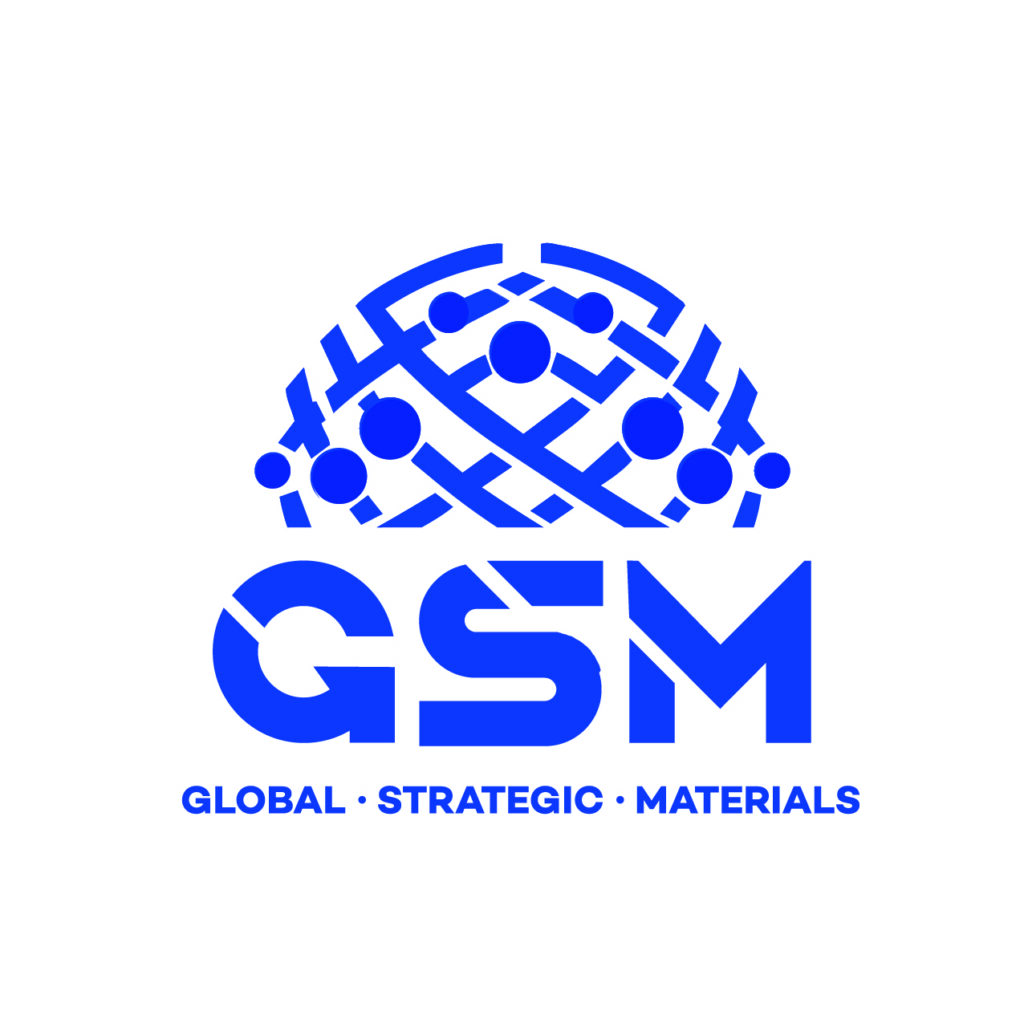In a rapidly evolving global landscape, the ability to build resilient, data-driven, and sustainable procurement functions has never been more critical. At Ball Corporation—a global leader in sustainable aluminium packaging—procurement sits at the heart of the company’s strategy to deliver innovation, operational excellence, and environmental stewardship.
In this exclusive interview, Ilija Genic, Head of Procurement for Ball’s PHC division, shares insights from nearly two decades with the company. He discusses the structure and evolution of Ball’s global procurement model, the integration challenges of M&A activity, and the increasingly vital role of supplier partnerships in advancing sustainability goals.
From navigating commodity volatility to deploying centralized category strategies and embracing circularity through low-carbon aluminium sourcing, Genic provides a compelling look into how procurement leaders can balance cost, complexity, and climate responsibility—without compromising business value.
Ilija, please provide a brief introduction to Ball and where the PHC division fits.
Ball Corporation is a global leader in sustainable aluminium packaging, supplying innovative solutions for the beverage, personal care, and household product industries. With a commitment to circularity and decarbonization, Ball is at the forefront of advancing recyclable and low-carbon packaging solutions that align with evolving consumer and industry demands.
The PHC division plays a crucial role in this mission, producing recyclable aluminium PHC cans that combine performance with sustainability as they can be recycled again and again. By leveraging cutting-edge innovations such as lightweighting and our proprietary ReAl® alloy, the division helps personal care and household brands reduce their carbon footprint while maintaining product quality and functionality.
As the demand for more sustainable packaging grows, Ball’s PHC division continues to drive progress in recyclability, material efficiency, and responsible sourcing, ensuring that aluminium remains the preferred choice for both brands and consumers.
Click Below: view the digital brochure version of this content
As Head of Procurement for Ball PHC Division, what are your total responsibilities and remit?
As Head of Procurement for Ball’s PHC division, I’m focused on ensuring a resilient and efficient supply chain across key categories, including aluminium, coatings, freight, packaging, and consumables. Ball takes a pragmatic approach to category management, balancing centralized strategy with decentralized execution to maintain flexibility while leveraging our scale.
Procurement for certain categories is fully centralized within my team to drive consistency and efficiency across our business. For example, aluminium—sourced as pure ingots before being processed into aluminium slags and shipped to our manufacturing facilities—is managed centrally to optimize cost and supply stability. Coatings, another critical input, are also fully centralized, ensuring uniformity in quality and performance. Similarly, procurement for utilities, such as energy and gas, and capital expenditures are centrally coordinated to align with Ball’s operational and sustainability objectives.

My team oversees the entire procurement process, from contracting and negotiation to execution, working closely with suppliers to secure high-quality, sustainable materials.
With global responsibility, how is the function structured? What are the benefits and challenges of a global model?
As I mentioned, some categories, particularly direct materials—are centrally managed to maximize supply chain leverage, ensuring cost efficiency and stability. However, procurement strategy is not static. A centralization approach may be in place for four to five years before shifting due to changing costs, inflation, or new business priorities.
The benefits of this model are clear: A global approach strengthens Ball’s supplier relationships, enables long-term planning, and ensures consistency across operations. However, the challenge lies in responsiveness—changes in one location can have ripple effects across the entire supply chain, making quick adjustments more complex. This trade-off is not unique to Ball but is seen across many industries managing large-scale procurement.
To navigate these challenges, procurement leaders at Ball meet regularly to assess current conditions, review historical data, and align on future projections. The goal is always to make strategic decisions that best serve the company, ensuring that our procurement model remains resilient, adaptable, and aligned with Ball’s long-term success.
Content Sponsor: PPG
Ball has grown significantly through acquisitions and is likely to continue this approach. What challenges does this create for procurement?
Acquisitions are a key part of Ball’s growth strategy, but they come with procurement challenges that require careful management. One of the biggest hurdles is integrating different systems, processes, and governance structures. Each acquired company may operate under its own set of rules, industry standards, and data management practices, creating discrepancies that must be reconciled to ensure a smooth transition.
Another challenge is balancing business continuity with the need for swift integration. If changes aren’t implemented quickly enough, the acquired business can continue operating independently longer than necessary, delaying synergies and efficiency gains. However, moving too fast can disrupt operations, making it essential to strike the right balance.
Cultural differences within an acquired company also play a role. Procurement teams may have different ways of managing supplier relationships, negotiating contracts, and handling spend management. Aligning these approaches with Ball’s existing contracts and supplier base requires clear communication and a structured transition plan.
Ultimately, successful procurement integration comes down to proactive planning and collaboration. By addressing these challenges head-on, Ball ensures that acquisitions not only expand our capabilities but also strengthen our overall procurement strategy, driving long-term value for the business.
Sustainability is central to Ball’s operations. How important are strategic supplier relationships in driving sustainability?
Our procurement team works closely with the sustainability team to integrate environmental commitments into supplier contracts, ensuring access to low-carbon aluminium and maximizing recycled content. This alignment not only helps us reduce our overall environmental impact but also ensures we meet the evolving sustainability expectations of our customers.
A key part of this strategy is Ball’s commitment to maintaining our Aluminium Stewardship Initiative (ASI) certification across our supply chain, reinforcing responsible sourcing and production practices. However, as industries such as automotive increasingly prioritize low-carbon materials, the demand for recycled aluminium is driving up costs. This creates a challenge: maintaining affordability and accessibility while advancing our sustainability goals.
By fostering strong, long-term supplier partnerships, we can help stabilize supply, mitigate cost pressures, and continue delivering high-quality, sustainable packaging solutions. Sustainability isn’t just about reducing emissions—it’s about creating a resilient, responsible supply chain that benefits both our customers and the broader industry.
Content Sponsor: GSM – Global Strategic Materials
Sustainability often comes with higher costs. How has Ball addressed this? Have close supplier relationships helped maintain competitiveness?
Sustainability is a long-term commitment for Ball, and we recognize that transitioning to a low-carbon economy can come with added costs—particularly as demand for recycled materials continues to rise. We are actively addressing these cost pressures through strategic supplier relationships and innovative sourcing approaches.
By working closely with our suppliers, we are building long-term partnerships that ensure greater transparency and supply chain resilience to create an effective roadmap. These collaborations help us secure the materials we need while maintaining cost competitiveness in an increasingly saturated market for recycled content. We are also exploring alternative sourcing regions to diversify supply and reduce volatility. For example, Quebec has been identified as a key location due to its access to low-carbon hydropower, which aligns with our commitment to decarbonization.
Beyond sourcing, innovation plays a critical role in mitigating cost challenges. Ball continues to invest in research and development to optimize material efficiency, reduce energy consumption, and enhance circularity. These efforts ensure that we remain a leader in sustainable aluminium packaging while providing our customers with high-quality, cost-effective solutions that align with their own sustainability roadmaps.
You operate in a commodity-driven sector with high supply chain risks. Beyond global disruptions like strikes and natural disasters, what are the primary challenges?
One of the most pressing challenges in our supply chain is navigating geopolitical uncertainty. Trade policies, such as proposed tariffs on aluminium imports, create volatility in pricing and availability, impacting the entire industry. Given that aluminium is a globally traded commodity, shifts in trade agreements and government policies can have significant downstream effects.
At Ball, we mitigate these risks through strong supplier relationships and strategic sourcing. Our scale and long-standing partnerships allow us to maintain a stable supply chain, even in uncertain market conditions. We are known for being “tough but fair” with our suppliers, fostering trust and ensuring they are proactive in supporting our needs when disruptions arise. This collaborative approach strengthens our ability to adapt to changing trade environments while maintaining competitiveness.
By staying agile and working closely with our partners, Ball remains well-positioned to navigate supply chain challenges and continue delivering high-quality, sustainable aluminium packaging to our customers.
We also utilize Business Continuity Planning, so despite having different category managers, everyone recognizes in advance the issues that could arise. And they are trying to work throughout the whole year to mitigate any potential risks. We carefully evaluate all the commodity-driven activities and all the categories of spend are driven through this lens.
At the end of the day, we want to make sure that we provide value to investors and suppliers, so that everyone can be happy across the value chain. Suppliers need to hit their targets, as well as us. It is really a collaborative effort, whenever we are at risk our suppliers work hard to accommodate our needs, and us as well.
You have been with Ball for nearly 20 years and progressed through the company. What has kept you engaged?
It is the combination of a dynamic industry, a strong company culture, and the opportunity to continuously grow that has kept me engaged and motivated over the years. I came into this role because I’m passionate about manufacturing—about how things are made, the impact we have on the market, and the innovation that drives our business forward. Procurement is an exciting space where no two days are the same, and the challenges we tackle are constantly evolving.
My journey at Ball started in a plant, where I learned firsthand how a can is made. That foundation gave me a deep appreciation for our operations and a clear perspective on how to scale up and drive meaningful change. Throughout my career here, I’ve been fortunate to take on different roles, always with the autonomy to innovate and the support to grow. Ball fosters an environment where people are encouraged to share ideas, take ownership, and contribute to the company’s success.
Beyond my own career progression, what makes Ball stand out is its commitment to diversity, inclusion, and supplier engagement. The company actively works to create a sense of belonging for employees and to build strong, responsible supply chains.
Even as the landscape evolves—through advancements in packaging, technology, sustainability efforts, and market shifts—Ball remains a place where people can make an impact and shape the future of aluminium




